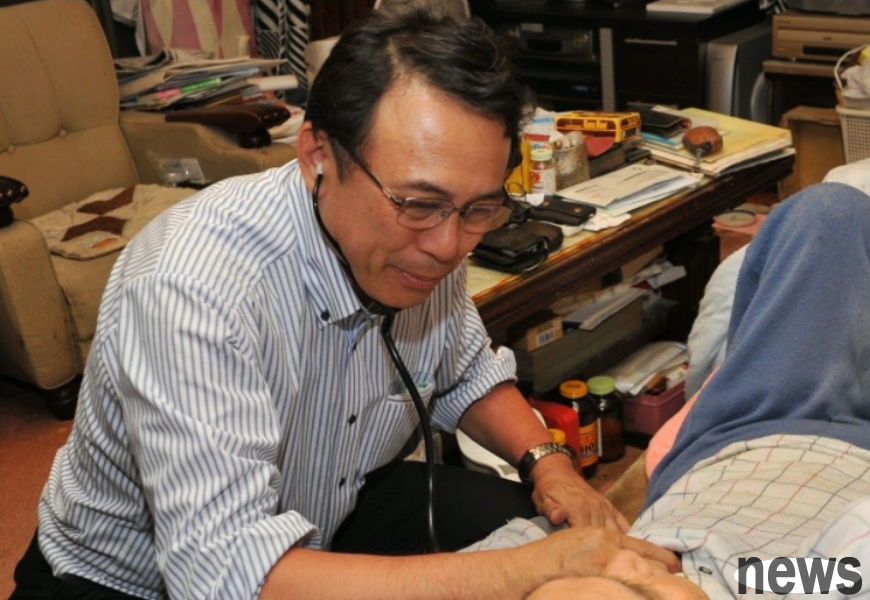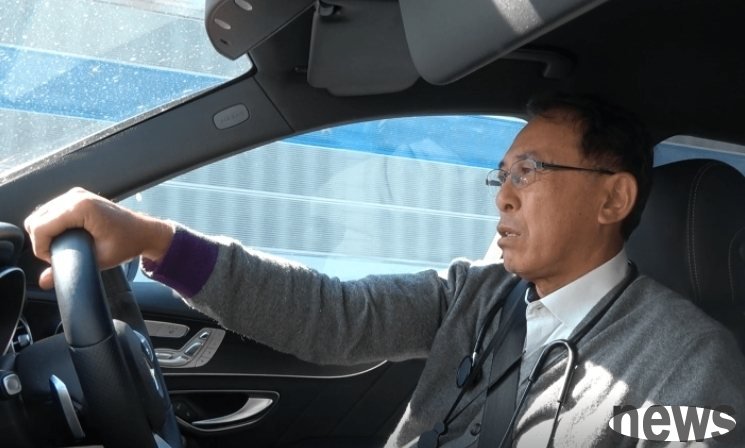Editorial Note: With the continuous progress of medicine, the "incurable symptoms" have been reduced and the average life has been greatly extended. Through medicine, many people's lives have been saved. However, as one of the means to...

Editorial Note: With the continuous progress of medicine, the "incurable symptoms" have been reduced and the average life has been greatly extended. Through medicine, many people's lives have been saved. However, as one of the means to "extend life", medical treatment may sometimes be accompanied by various pains, and people who can die in a quiet and painless manner may still be a small number. If you or your family around you desire to seek "ideal death", are you ready to prepare for it?
When discussing death, some people may feel obscene, but "how to die" is an important topic that needs to be discussed with your family in advance. Everyone may have different ideas about what measures to take to reduce pain and choose the final way they want.
{99}The medical model of "at-home medical treatment" in Japan means that the patient is not hospitalized (or in the Anning medical stage at the end of the disease), and the doctor gives the patient a diagnosis and related support at the patient's home. It has been more than 30 years since its implementation in the 1980s and is gradually being promoted in Taiwan. Compared with the prolonged treatment of "in general, it is possible to keep patients alive", in the home medical department, we pay more attention to the treatment and care, respect the life view and life style of the sick, and balance the medical and human nature. For patients who are about to die, we hope to achieve the goal of "stay and death".
Peaceful death: Medical views that are closer to human nature than extending lifeWhat is "Peaceful death"? Japanese doctors Nagai and Hiroshi proposed five specific requirements for this:
1. When they passed away, patients could stay in the place they expected.2. Through sedation and medical treatment, the patient's suffering can be reduced as much as possible.
3. Keep as fun as possible in your daily life and be able to do what you want.
4. The patient himself is not afraid of death.
5. Neither the patient nor the family are dissatisfied with the present situation.
Another resident doctor, Akihi Nakamura, pointed out that generally speaking, there are three main situations when implementing resident doctors:
1. There are difficulties in diagnosis when going to and from the hospital.2. The symptoms enter the end of the period, and the life is estimated to be around weeks to 1 or 2 months.
3. The patient himself expressed his desire to return home.
However, even though he has been in Japan for many years, Nagao and Hiroshi believe that up to 90% of the people still have no idea about this. Even in the medical field, 80% of the doctors do not really understand the meaning of "drug in the hospital" or "serious death" or "death with respect".
Haowei and Hong pointed out that once had contacted a patient with terminal lung cancer, the patient's daughter wanted to let her father accept medical treatment at home, but after asking an expert in medical treatment, the answer was: "Lung cancer is not suitable for medical treatment at home."
In general medical logic, in order to maintain the balance of nutrition and fluid in the body, the doctor will definitely give a little. But he believes that patients who pass away in hospitals often cause excessive fluid to irritate their bodies, "the body looks like a drowning person." According to European and American literature research, the human body is finally draining water, which can reduce pain and eventually lead to a longer life.
"This is the fundamental difference between existing medical and in the home medical field. To what extent should be reduced pain and the need to take continuous life measures, experience and wisdom that need to be grasped and desired."
Doctors who do not wear white clothes reduce the sense of distance between medical diseasesOn average, Long Tai and Hong, who have sent away more than 600 patients in a year, has also been another "different from the rest" over the years: He does not wear a doctor's robe, regardless of whether in the clinic or at the patient's own home.
"I hope that medical behavior can be carried out in a more relaxed atmosphere. In my 20s and my third year as a doctor, I supported a foreign clinic and the director of the hospital appeared in a very relaxed jogging sweatshirt. At first I thought it was where I came from. "I'm not a snatching uncle? But after careful observation, the patient's expression is also relaxed, and the atmosphere is very different from that of ordinary hospitals."
Haowei and Hiroshi said that although the white robe symbolizes the professionalism of the doctor, it also brings distance and authority from the upper and lower levels, and even makes some patients feel terrified.
Since 20 years of being a resident doctor, Kazuo and Hiro, who have been employed in the 20th year of age, have so far seen more than 2,500 patients who have passed away, said that because he has contacted many high-grade patients such as dementia and cancer, he has a different understanding of "what people live for" because of his contact with many patients with high aging, such as dementia and cancer, and his family.

"Even if you are sick, people can live happily. They can laugh, chat happily with friends, or travel. Many people with high age tend to feel that life is tasteless or depressed, but in many patients who are not long after, I see an indestiny vitality and laughter."
Akisu Nakamura believes that another advantage of being a resident doctor is to have higher degrees of freedom in life. Without the hospital's regulations, you can do whatever you want, and be able to control your own life rhythm and space, which will help make patients feel more mentally stable.
In the years of death, "No one can die in hospitals"In Japan, due to the sharp increase in the proportion of high population and the post-war period of baby tide gradually entering the old age and illness, in 2018, 1.3 million people died every year, and this number will increase significantly to 1.6 million by 2040. That is the arrival of the so-called "multiple death era".
Therefore, from another perspective, it is impossible for hospitals to undertake all end-patients. "When staying at home", "when staying at home", have become indispensable options in Japan in the future. Even if a person lives alone, as long as he has resources such as social welfare or nursing, he can still live a long life at home without facing the dilemma of "death alone".
"But if the politicians ask: 'We want to build a city that can die at home with peace of mind', no one will support it, because everyone likes hospitals very much. Especially those with high aged, their dependence on hospitals is very strong. Even if the hospital faces problems such as business deficits and insufficient doctors' labor, everyone still hopes that the place where they live can be convenient for medical treatment at any time." Nagao Kazuo said.
The system in homestead medical care needs to be more perfect, and it also needs to include regional support, common understanding and recognition of police and rescue systems. "If patients who do not sign DNR have stopped at home, if they call for a rescue vehicle, the rescuers must take first aid measures when they arrive, otherwise the law will be violated."
Welcoming the end of life at home requires the most understanding and support of family membersIn terms of the current stage, even if more than half of Japanese elders want to end up old at home, when it comes to the end, 80% of people have spent time in the hospital, and this has only become common around 40 years ago. "Before this, the last breath at home was actually a relaxing and ordinary thing."
When the patient was diagnosed, Nagao and Hong would first explain the "pre-death process" to the family and even the patient themselves: such as what might happen, what reactions the body would have, etc. Although the family heard the pain, they also had psychological preparations. After the patient passed away, many families would tell him: "Although it is difficult, it is much more at ease than anything else."
He also observed that the family often had difficulty accepting "death of the ultimate". The disputes arose during the final stage of medical treatment in Japan were difficult to reach a common understanding. He believes that promoting home-based medical treatment requires the most understanding and support of the entire family. "In my experience, I almost never decided to take the patient's family to end up at home and feel regretful. Everyone supports and shares their feelings, which greatly reduces the regrets in my heart."
"Just like I have pain before production, except for a very small number of accidents or sudden deaths, most people are dying You have to cross the "wall of death" before you can reach the end of life. Thinking about oneself or one's death is not about touching bad things or bad things, but rather a manifestation of life's extreme autonomous development; thinking about death and understanding death can have a deeper understanding of the meaning of life." Nagao and Hiroshi said.